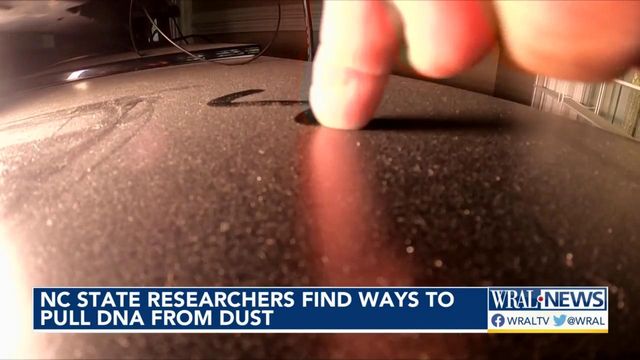DNA in dust could be new source of evidence to solve crimes
You can barely see it, but the dust in our homes may be hiding something important: DNA. A forensic scientist at North Carolina State University believes that dust can be used to solve crimes.
Dr. Kelly Meiklejohn sees dust as a source of evidence. It can contain some of the hundreds of thousands of skin cells shed by the human body each day.
"We're looking at alternate sources of evidence that may be overlooked," she said. "A perpetrator probably won't clean up dust."
She tested her theory by asking 13 people to swab places in their homes where dust collects – on furniture, picture frames, door frames.
"Then we would carefully put the swab into a tube for DNA extraction," she said.
Ninety-three percent of the time, Meiklejohn was able to identify DNA of people living in the home from the dust.
"We can say, 'Yes, that individual is in their dust.' And we're also able to detect non-occupants," she said.
About half of Meiklejohn's tests revealed DNA from other people who had been in the home. She believes it is evidence that could help investigators solve crimes.
"This could be something they could look at to help potentially help in those cold cases where they don't have any leads," she said.
While DNA might not point to a specific person if that person's DNA is not already on file, it could give investigators key details about a suspect, like ancestry, eye color or hair color.
It remains to be seen just how law enforcement will use any information collected from dust. But every bit of information in a criminal investigation is a good thing.
Meiklejohn's study was just published this week in the Journal of Forensic Sciences.
WRAL's podcast, "What Remains," offers a deeper dive into how investigators use DNA and other forsenci evidence to solve the cases of missing and murdered people. Find it on Apple, Spotify or anywhere you get your podcasts.












